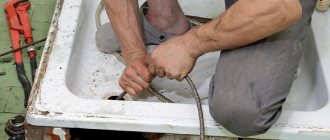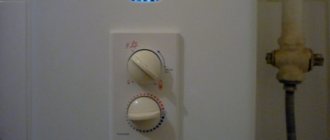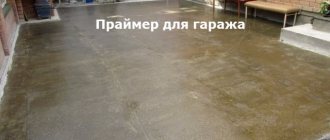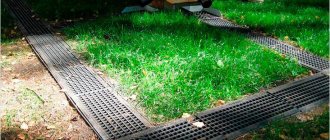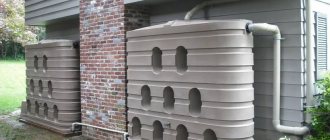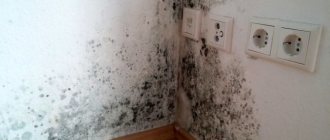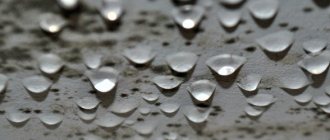Moisture accumulating on the surface of pipelines in bathrooms is a problem that many people are familiar with firsthand. This phenomenon is common, especially often observed in the summer, when the air warms up to high temperatures. It seems that nothing bad is happening, but the droplets can turn into streams, and such mini-rivers will become small puddles on the floor. What to do if condensation appears on cold water pipes? There are several reasons for the formation of moisture, which means that there are various effective solutions to this problem.
Why does condensation appear?
What causes condensation to accumulate? First of all, this is:
- any source of moisture.
- significant temperature changes in the room (for example, when taking a shower, the room becomes warm and humid).
- poor ventilation (no windows or forced ventilation system in the room).
- features of the water supply distribution configuration (for example, hot and cold water supply works are too close).
- poor-quality thermal insulation of pipes.
Insulated pipeline Source kanaliza.ru
High humidity in the room can occur due to:
- Problematic communications and building features. A large amount of steam can appear during cooking, a clogged ventilation shaft, a flooded basement, evaporation that comes from drying laundry, etc.
- The presence of defects that may appear if construction rules are violated.
- Unfavorable natural phenomena (prolonged precipitation, humid climate of the region).
- Geographical features of the area. For example, there is a pond nearby or high air humidity is combined with rocky soil.
Condensation on pipes can appear either due to one of the listed reasons or due to a combination of them.
Common insulation mistakes
The appearance of condensation in a ventilation pipe requires urgent action, but the process of eliminating the problem must be carried out efficiently and accurately. If, after insulation of the ventilation duct, reconstruction, or installation of fresh air ventilation, condensation continues to form, the problem may be caused by several factors:
- The part of the pipe that is located in the wall or ceiling remains uninsulated.
- The outer part of the air duct is not insulated.
- There is no thermal insulation of the valves of the supply ventilation system.
- The thermal insulation material is thin.
- Large gaps remained at the joints of the insulation.
Consequences of condensation
Typically, in rooms where there are plumbing fixtures, air humidity is always higher than normal, so the appearance of water droplets on pipes is a common occurrence. If it appears periodically and is quickly eliminated, then there is no need to worry. But when pipes are constantly wet, this can lead to serious consequences:
- Mold formation. High humidity is an excellent environment for the development of fungus and other pathogenic microorganisms, which can lead to the formation of mold on surfaces, which is quite difficult to get rid of. In addition, mold and mildew on the walls can provoke the development of serious diseases.
- Flooding. Droplets of water that appear on pipes cannot disappear on their own. They flow down and, if there are cracks in the ceilings, they can penetrate to the neighbors below, causing flooding and damage to the floor covering.
- Damage to property. All things in the room can suffer from contact with water. Due to constant such interaction, plastic quickly loses its consumer properties, metal succumbs to rust, paint cracks, and ceramic tiles can fall off the wall.
Condensation on a metal-plastic pipe Source otvet.mail.ru
To avoid this, it is important to get rid of condensate on the pipes as quickly as possible.
Does it need to be cleaned?
The process of moisture deposition itself is not critical , but it is undesirable for walls and other objects surrounding pipes. Absorption of moisture contributes to the destruction of building materials, causing the appearance of fungus, mold, and insects.
If condensation occurs on polymer surfaces in well-ventilated areas, you may not be too afraid of this phenomenon.
It is enough to get rid of the causes of steam deposition, and no harmful consequences will arise.
It is more difficult when steel parts , structural elements of the house, and reinforcement of load-bearing walls get wet.
In these cases, the most effective measures must be taken immediately, including temporarily turning off the water and identifying the source of danger.
Determining the cause
Before you figure out how to remove condensation, you need to understand why it appeared in the first place. To do this you need:
- Check the ventilation by inspecting the grille and assessing its functioning. It's easy to do. It is enough to open the window slightly and bring the paper to the grille. If the leaf sticks to it, then ventilation has nothing to do with it. If the sheet falls, then the cause of moisture is a malfunction in the ventilation system. If an electric fan is installed in the room, turn it on and evaluate the condition of the pipe. Even if the condensation does not disappear in this case, the cause should be looked for elsewhere.
- Checking faucets and stopcocks. A problem in their operation can be noticed immediately, without the use of special equipment. If a leak is detected, it must be eliminated by replacing or adjusting the operation of the faulty parts of the system.
- Checking risers. Sometimes the appearance of condensation on pipes can be associated with a leak in neighbors.
- Checking the wiring. If the cold and hot water pipes are installed incorrectly and the distance between them is minimal, then condensation may appear on them. If water is supplied to both at the same time, a temperature difference will appear at the point of contact and droplets of moisture will appear on the surface. Typically, this situation is typical for private houses where laying of pipes was carried out by non-professionals. Correcting the situation in this case can be problematic, since it may require violating the integrity of the wall. But, usually it is enough to simply use insulation and reduce mutual heat transfer.
Using polyurethane foam on water pipes Source plitochkin.ru
If the ventilation and water supply system are working properly, the reason for the appearance of condensation may be due to temperature changes in the room.
Droplets of moisture will always appear on the pipes if the difference in ambient and water temperatures is more than 17 degrees. Installing an additional room heating system will help eliminate this.
In an apartment and in a private house - what is the difference?
Water supply systems for private and apartment buildings differ in size. The number of subscribers in the apartment building is very large, which creates conditions for constant cooling of the risers and cold water pipelines.
In a private house, the number of users is limited, so the water moves through the system less actively and has time to heat up a little. These few degrees are enough for the conditions for moisture deposition to change and the process to stop.
If a private house has an autonomous water supply system, then the water is not under strong pressure and flows into the premises more smoothly. Then evaporation appears only due to poor-quality ventilation, which does not have time to remove air supersaturated with moisture.
Hood installation
Even at the stage of construction of residential buildings, specialists create a centralized ventilation system, which avoids disturbances in air exchange and, as a result, the appearance of moisture on the pipes. But sometimes it may not work effectively.
To avoid the formation of condensation, you need to install a forced ventilation system and turn it on regularly. This way, you will be able to get rid of steam or normalize air exchange.
Protecting a pipe from condensation using a thermally insulating coupling Source sense-life.com
Preventing the problem from occurring
The most effective preventive measures can only be proactive actions:
- early installation of thermal insulation,
- box assembly,
- setting up equipment and cranes.
It is necessary to organize the water supply so that all cold surfaces are removed from contact with moist internal air.
Important! Preventative measures require effort and time, but they will avoid unpleasant consequences and protect the supporting and load-bearing structures of the house from destruction.
Using special devices
If it is determined that the reason for the formation of condensation on the pipe was precisely the temperature difference, you need to take care of insulating the riser. For this purpose special materials are used. They may differ not only in cost and appearance, but also in insulating properties.
The easiest way to insulate the drain is with foam material. It is easy to use and has minimal cost. Such linings are a soft pipe with a cut in it. This cover is put on the riser and glued together. To maximize the effect, it is important to choose the correct size of the insulating pipe. If its diameter is too large or small, then it will have no effect.
Heat-insulating paint, which is applied in several layers to the problem riser, will be more expensive, but more effective. When working with this material, it is necessary to properly ventilate the room.
Thermal insulation of pipes on the street Source sense-life.com
Both of these methods can be combined to obtain maximum results. Before you put on the cover, you need to make sure that the paint is thoroughly dry. You can also apply paint over the attached nozzle.
The most labor-intensive way to protect against condensation is to use a plastic pipe whose diameter exceeds the size of the riser. The space between the pipes is filled with polyurethane foam.
Chemical insulating material Source superiorcoatingsolutions.com
Insulation of water pipes
Insulation can be done using an insulating pipe with a cut for ease of installation on the pipeline. Before installing the product, thoroughly clean and dry the piping. This method is the simplest and fastest. Its essence is simple: eliminating sudden temperature changes.
If you are not looking for the easy way out, you can carry out full thermal insulation, which will also help eliminate condensation. For work you will need: sanding paper, strips of cloth 5-6 cm wide, rust converter, spatula, strong thread, acetone and epoxy putty. Work algorithm:
- The water pipe is plastered to increase adhesion strength;
- Using a cloth soaked in acetone, the pipeline is degreased;
- The product is treated with a rust converter;
- We wait for some time for the pipeline to dry. Then we apply thick epoxy putty to it;
- The water pipe is quickly wrapped in cloth, the edge of which is fixed with a strong thread;
- Similarly, apply 2-3 layers of fabric insulation;
- Epoxy putty is applied again;
- We wait until all the layers are dry. Then the pipeline is sanded and painted.
Additional ways to eliminate condensation
- Corrugations with a large diameter are purchased. The cavity between it and the pipeline is filled with polyurethane foam. The method is optimal for working with a riser;
- In specialized stores you can look for the Grafotherm composition. Its operating principle is simple: the product forms a thin but durable film that prevents condensation;
- If the cause of this problem is a slight water leak, you will need to replace or repair the faucets or the cistern inlet valve;
- If droplets of water appear on the riser, it is possible that the problem is not your fault, but the neighbors above. Accordingly, this is an excellent reason to pay them a friendly visit;
- The easiest way to eliminate condensation is to wrap water pipes with cloth or bandages. The method is only good for temporarily getting rid of the problem;
- Be sure to check the quality of ventilation in the bathroom and toilet. This factor also affects the formation of water droplets. If necessary, it is recommended to install an exhaust fan;
- Insulation from water pipes transporting cold water is carried out using special tubes made of various materials (foamed polyethylene, energy flex, and so on). It is enough to cut these products along the entire length, install them on top of the pipeline, securing them with metallized permanent tape. This measure allows you to eliminate temperature changes, temperature changes at which surfaces become foggy, and then drops of water begin to flow from them onto the floor.
If you've already tried everything, but the condensation doesn't seem to go away, the problem may be more serious. Perhaps the difficulties lie in poor waterproofing of the walls or floor. Cosmetic repairs are not enough here. It is necessary to determine which factor leads to an increase in humidity. This could be evaporation from the basement, a damp foundation, or unprofessional thermal insulation of the walls. Only after eliminating the source of the problem can you begin to work on high-quality insulation of walls and ceilings.
Use of chemicals
If it is necessary to protect the pipeline from the formation of condensate drops on its surface, you can use special means: Asstratek, Stermizol, Corundum, etc. They are used as follows:
- The surface of the pipe is cleaned of dirt and rust. To do this, it is wiped or sanded.
- To make the mixture adhere better to the surface, it is coated with a primer.
- Using a brush or spray bottle, the substance is applied to the surface. It is advisable to apply at least 4-5 layers to be sure that droplets of moisture will no longer appear on the riser.
- To increase the service life of the pipeline, a fixative is applied on top of the insulating material.
Thermal insulation of pipes with mineral wool Source malivice.ru
Physical pipe insulation
Excess moisture can also be eliminated using special insulating materials, the range of which is presented:
- polystyrene foam;
- basalt;
- foamed polyethylene;
- mineral wool.
The insulating material is manufactured in the form of rolls, which are installed around the pipe to be insulated. The roll has three components:
- the insulation itself;
- protective layer;
- adhesive base is not a mandatory component; it may be absent on some products.
Installing insulation yourself is not difficult. When choosing a roll, keep in mind that its diameter must be comparable to the diameter of the pipeline, otherwise the insulation will not fit tightly to the pipe and moisture will accumulate under it. The procedure for the physical thermal insulation process is as follows:
- cleaning the pipe surface from dirt and rust;
- removing the protective film from the adhesive base of the roll or applying glue for insulating material to the pipe;
- installing a roll around the pipeline - the first should be pressed firmly against the last, this will ensure high-quality adhesion of the surfaces;
- sealing the longitudinal hole of the roll.
Using a steam trap
The main task of this device is to remove the moisture that appears. It is installed at the outlet of the heat exchanger (heater, water heater, etc.). This device removes moisture, separating it from steam. Steam traps can be thermostatic, float or combined. The most popular are the float types. Their action is based on the difference in density of steam and water droplets.
The advantage of using a float steam trap is:
- high reliability and efficiency;
- resistance to various types of load and temperature fluctuations;
- ability to work with light loads;
- no need to cool the formed condensate.
Float-thermostatic condensate trap Source evalve.ru
The roof is not insulated well enough
Quite often, the formation of condensation in the roof is associated with its poor insulation. Typically the problem is caused by the insulation material being too thin, allowing moisture to penetrate into the area of the slabs. However, the layer may have sufficient thickness, but its quality leaves much to be desired. In this case, at sub-zero temperatures outside, warm air will leave the room. Where warm and cold flows collide, droplets of water will settle, which will first fall into the attic, then can penetrate into the house, damaging the ceilings or walls.
To solve the problem, you need to understand how heat leaves the room. If the insulation layer is of high quality, but too thin, it needs to be strengthened. It is not necessary to re-insulate the entire structure; it is enough to wait until winter and observe at what points the material or metal base of the roof becomes wet.
If snow falls in your area, inspect it carefully. In the place where the heat leaves, it will be soft and begin to melt. A more complex way, which does not depend on the time of year, is to use a thermal imager. This is a special device that will help determine the exact location, but the services of a specialist or the purchase of the equipment itself are quite expensive.
Making your own thermal insulation
If you wish, you can insulate the riser yourself. What you will need for this:
- a piece of sandpaper to remove rust;
- phosphoric acid or any other rust converter;
- a piece of fabric (ideally cotton);
- strong thread, twine;
- putty.
Correct pipeline layout Source news.wjct.org
The insulation process is as follows:
- Prepare insulation. Any rag (an old sheet or towel) can become it. It is cut into strips no wider than 10 cm, which are rolled into a roll.
- Clean the surface of the water pipe, additionally degreasing it. Acetone or nail polish remover containing this substance is suitable for this purpose.
- The pipe is coated with a substance called rust converter, and after it dries with putty.
- After it dries, the fabric is wrapped around the pipe. This must be done so that each new turn made covers part of the previous one.
- The rags are soaked with putty.
- Using thread, the fabric is secured to the pipe.
- When the fabric is dry, it needs to be covered again with thermal insulation.
- Finally, a final layer of putty is applied.
- The surface is painted in the desired color.
Other condensation protection options
Experts also suggest the following ways to fix the problem:
- Application of isollate. This is a universal material that is suitable for pipe insulation. It is a thermal water-based paint that is applied to the problem riser. After complete drying, it turns into a polymer. The painting process is simple. First, the surface is cleaned and sanded. Afterwards it is degreased and painted with the composition. After it dries, a new layer is applied and so on 4-5 times. Finally, silicone varnish is applied, which makes the surface glossy.
Pipe repair by a plumber Source shvydkoservice.com
- Use of moisture absorbers. This is a household appliance that is designed to combat the problem of condensation on cold surfaces. It is a plastic container containing an absorbent substance.
- Installation of a split system. This option is the most expensive, so it is not suitable for everyone. Equipment with climate control function creates an optimal climate in the room. Such a system must be installed by specialists.
Installing a split system in a room with high humidity Source edilportale.com
Plumbers' tips for preventing leaks
Experts who often deal with “crying” pipes have gained extensive experience in preventing the problem in the bud.
Should be purchased at the Corrugated plumbing store. The substance is applied to the entire surface of the pipes, resulting in the formation of a strong and elastic base that prevents the accumulation of moisture.
Liquid thermal insulation also brings good results. It is applied to completely dry pipes and prevents sudden temperature changes that cause condensation.
If there is a large difference between the air temperature and the supplied water, it is necessary to insulate the pipes. The most effective and suitable material for these purposes is polyethylene foam, which is sold in any hardware store at a very affordable price. The material is fixed using a clamp and ordinary wire.
Fogging can be eliminated using the proposed methods, but which method to choose must be decided after the exact cause has been determined.
